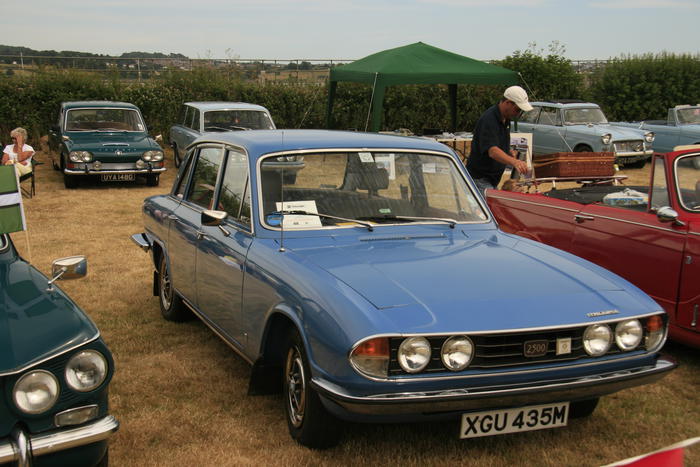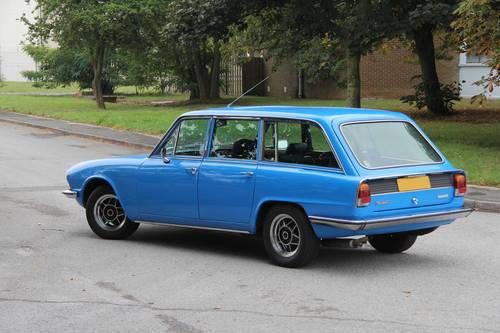Triumph 2000 2500 Service Repair Manual Brooklands Books Ltd UK
|
Triumph 2000 and 2500 Owners Service & Repair ManualNEW 560 pages Triumph 2000 & 2500 Owners Service & Repair Manual Covers:
|
The Triumph 2000 is actually back, mid-sized wheel drive automobile which was produced in Coventry by the Triumph Motor providers between 1963 and 1977. Larger-engined designs, known as the Triumph 2.5 Triumph and PI 2500 had been additionally produced.
The car used the six-cylinder engine very first seen in the Standard Vanguard at the end of 1960. However, the final of the six cylinder Vanguards had applied a compression ratio of 8.0:1 which the increasing availability of higher octane fuels enabled the manufacturers to increase to 8.5:1 for the Triumph. This and the fitting of twin Stromberg 150 CD carburettors made for a claimed power output increased to 90 bhp (67 kW; 91 PS) from the Vanguard's 80 bhp (60 kW; 81 PS).
Accepted transmission on the initial car had been a 4-speed manual gearbox. (overdrive and Borg-Warner Type 35 3-speed automatic transmission were options.) The monocoque body had independent suspension all-round using coil springs. The servo-assisted brakes were disc at the front and drums at the back.Triumph's 2000 competed with the contemporary Rover P6 2000, which once was granted exclusively with a four-cylinder engine. The Rover had been additionally released in October 1963, just one week before the Triumph. Together the cars defined a brand new marketplace sector in the UK, promising levels of comfort and luxury hitherto associated with larger Jaguar and Rover designs, but with usefully lower running costs and choose prices, all in a modern package.
Although the "Mark I" was presented to the public at the London Motor Show in October 1963, volume sales began just in January 1964. Continuing in manufacturing until 1969, this version came in saloon and, from 1965, estate forms. The estate, its body shell partly built by Carbodies, was in the Mark I version the same length as the saloon. Various minor improvements were created during the period of which the most noteworthy, probably, was a significant upgrade in October 1966 to the "previously rather ineffective" ventilation, with eyeball vents added in the centre of the facia and the heater controls repositioned beneath them.In 1968 the 2.5 PI (petrol injection) Mark I was established, installed with a Lucas Automotive mechanical fuel injection system. Show had been really good, but the PI models (along with the TR6 models) gained a reputation for unreliability and poor fuel economy.
In Australia these models endured badly because of the summer heat. The electric fuel pump commonly overheated causing fuel to vaporise and render the engine inoperable until the pump cooled down. The overheating of the pump was caused by a mixing of really maximum pressure level fuel loads (over 110 psi (7.6 bar)) and a pump that was adapted from what was initially a windscreen wiper motor. As such, it did not cope well with sustained pressures in moderate to high ambient temperatures. Because of the release late in the Mark I's life, there are relatively few PIs in the original shape.In October 1969, the Mark II range was launched, again styled by Michelotti, updating the vehicle for the 1970s. The front of the car then followed the lines of the then-upcoming Triumph Stag grand tourer. There were entry-level 2000 models, which were the most plentiful, but the remainder of the range consisted of 2500, 2500 TC and 2500 PI models. Aside from the PI (petrol shot) models, all Triumph 2000 and 2500s had twin Stromberg or SU carburettors, the "TC" prefix on some models can seem misleading in this respect as it stood for a higher equipment level. In June 1975 the 2500S model, with 14 inch (356 mm) anti-roll and wheels bar, was added: it replaced the 2.5PI which had quietly disappeared from the show rooms two months earlier. This marked the end of fuel injected engines for the car, but improved acceleration was claimed for the twin carburettor 2500S and its slightly less expensive 2500TC sibling. These new versions highlighted an extensive list of other, mostly minor, improvements, of which the most significant were probably those touching the ride and handling: these resulted from suspension changes and the associated fitting of an "anti-sway" bar.
The Estate in the Mark II version was 5 inches (125 mm) shorter than the MkII saloon, because the back bodywork of the car was carried over unchanged from the MkI version.
The Mark II, the final big Triumph car, ceased manufacturing in 1977, supplanted by BL's business executive car, the Rover SD1: Six-cylinder 2300 and 2600 versions of the brand new Rover would nonetheless be powered by engines based from the Triumph 2000. The last manufacturina vehicle, a 2500S estate (BOL87V) is kept at the Heritage Motor Centre.
Various models happened to be assembled in South Africa, with the later 2500TC and 2500S being badged as the Triumph Chicane in that marketplace between 1973 and 1978.
In New Zealand CKD manufacturing of the Triumph 2000 continued at New Zealand Motor Corporation's Nelson plant, with 2500S models until March 1979. Sir Robert Muldoon, New Zealand's then Prime Minister, privately purchased a white 2500S and had been known to drive to work in it. This car is now under the owned by a member of the Auckland Triumph automobile Club.
Numerous of these cars are even on the road, supported by owners clubs and specialist parts suppliers. Prices vary depending on spring and model with the mk1 2.5PI estate being the most valuable. A roadworthy 2000 will cost around £700–£800; mint examples fetch upwards of £3500. A mk1 PI recently sold for £11,000. The 2000 and derivatives are additionally popular with modifiers owing to their common engines and parts shared between other Triumph models such as the GT6, TR6, and Vitesse.
Triumph 2000 and 2500 Owners Service & Repair Manual
.

 0 Items (Empty)
0 Items (Empty)



 >
>